Indian Aviation Industry: Who’s leading the Pack? (Part II)
May 28, 2024 | Deep Dives

In part 1 of our blog, we discussed how the aviation industry appears to be headed towards strong growth. Amongst all, we also discussed how Interglobe Aviation Limited (“Indigo”) appears to be set to enjoy benefits from this industry wide tailwinds.
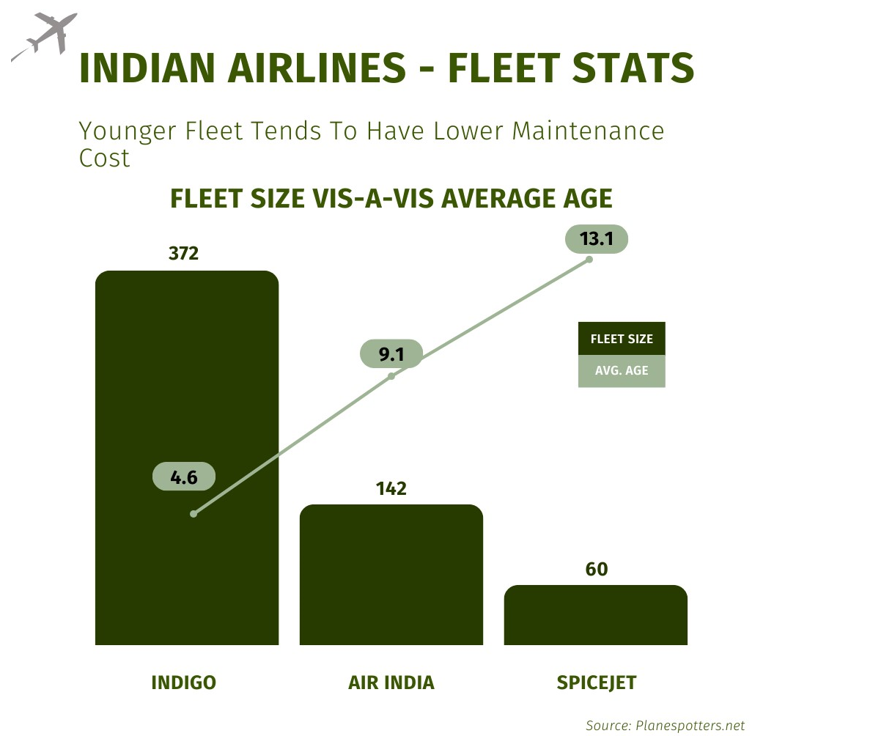
This part of the blog delves deeper into the operational metrics of Indigo which is India's largest airline and one of the world’s leading low-cost carriers with a dominant position in the Indian airspace (60%+ domestic market share and 17%+ international market share) with an exemplary management team. It offers passengers a simple brand promise of providing “low fares, on-time flights, and a courteous and hassle-free service”.
The company has a mega fleet of 360+ aircrafts with an average age of 4-4.6 years, almost half the average age of Air India and Spicejet. Further, it is undertaking aggressive capacity expansion by almost doubling its aircraft fleet in the next 5 years.
Some of the key operational excellencies of Indigo include:
1. Favorable shift in the Average Stage Length:

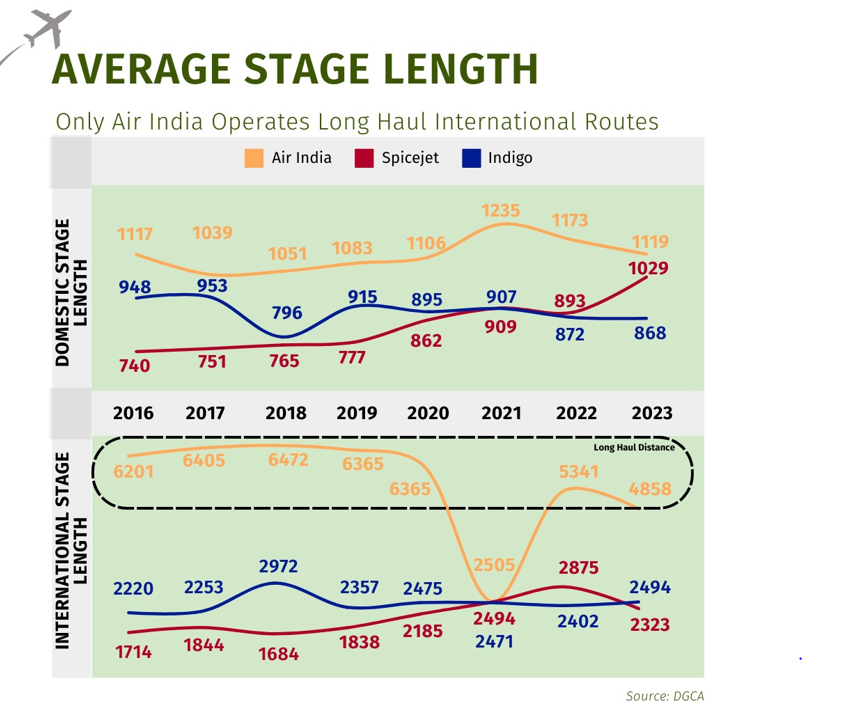
The lower the average stage length, the more cost-effective the airline is for short-haul flight operations (<4 hours flying distance). A lower average stage length also means a greater number of departures. For long-haul operations (>6 hours flying distance), higher stage length usually leads to cost savings which lead to improved profitability.
Over the last 10 years, Indigo’s domestic average Stage Length (Average Distance flown) has reduced from 947.5 Km in 2016 to 868.4 km in 2023. During the same period, the international average stage length increased from 2,219.8 km to 2,493.5 km. With the introduction of long-haul flights, the international average stage length is expected to increase further in the coming years.
Therefore, since the base minimum fare and functional constant is always received by the airline and the costs are limited, the low-cost carriers are able to earn higher yields per km flown on destinations that fall in the range of short to medium distances as compared to medium and longer distances. Thus, although the number of departures is higher, with extremely efficient operations, Indigo is able to earn good margins with good traffic volumes on these low to medium-faring routes.
2. Stable Yield Strategy:
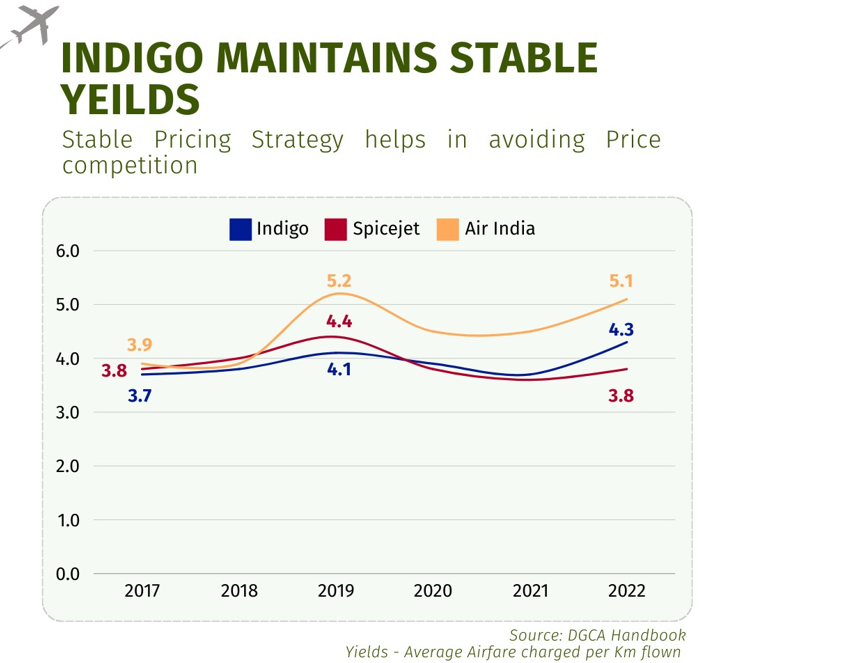
While Air India and Spicejet have struggled with volatile Yield Per Passenger km, i.e. fare charged to a customer per km flown, Indigo has maintained a stable yield range over the years. It has kept its pricing strategy very clear – “Affordable”.
Although sounds simple, in light of the aviation industry it is very difficult to maintain stable fares. This industry has always been troubled with pricing wars. However, Indigo’s strategy has been very clear – avoid price wars. Indigo maintains a fair airfare which is slightly higher than its competitors sufficient enough to pose to customers as if they are getting Indigo at almost similar fares (or at a very nominal premium).
3. Operational Excellence:
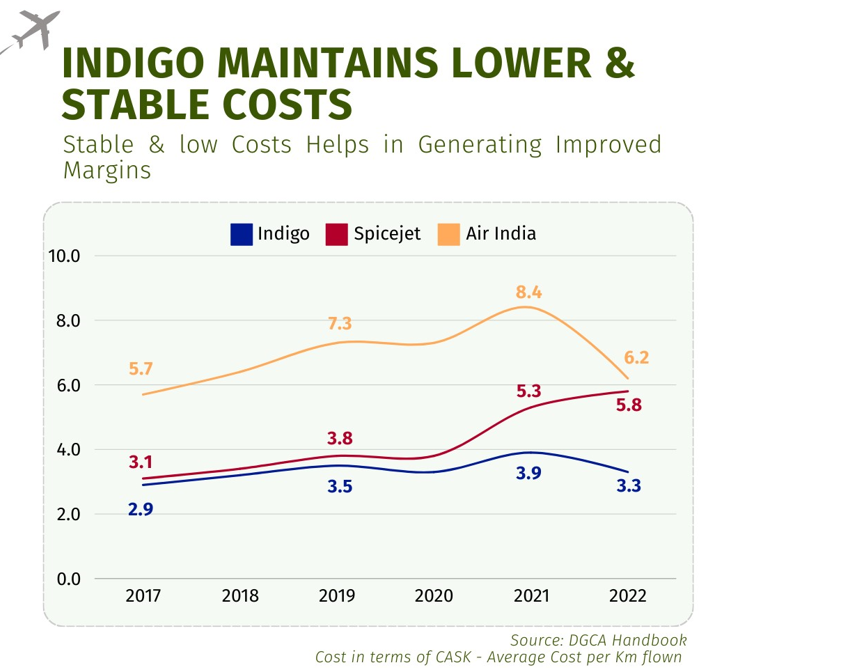
Strong management acumen with years of experience in operating airlines, strong business fundamentals and tactics like sale and leaseback model, maintaining lower aircraft weights, maintaining a passenger load factor at 80-85% levels, etc. leads to improved cost efficiency.
Whilst other players have struggled with maintaining their Cost per Available kms, Indigo has maintained a clear strategy to keep its operations efficient. The RASK-CASK spread has remained healthy over the years at Rs. 0.30-0.40 per passenger-km.
4. Efficient cash management:
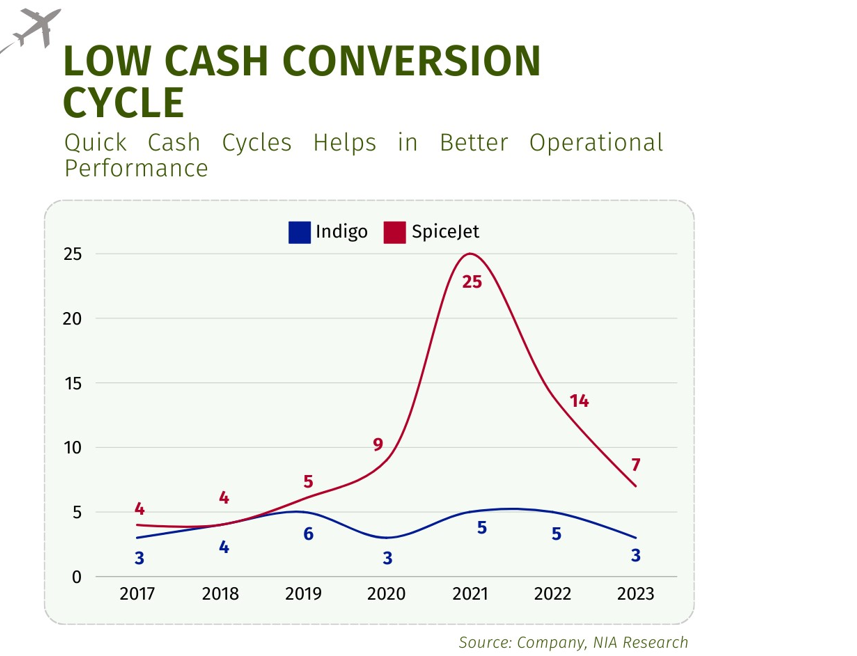
Indigo has managed to maintain a stable cash conversion cycle with the lowest in the industry conversion cycle of 3 days. Further, with a cash and cash equivalents balance of over Rs. 13,063 Crores as of 30 September 2023, the company appears well-prepared for capacity additions. This liquidity also aids in better credit ratings and therefore, lower lease finance costs.
All these strong fundamental metrics combined with tailwinds for the industry should lead to multiple benefits for the pioneer of the Indian aviation space, Indigo.
Whilst these factors do indicate a strong road ahead, various factors can impact the operations of the entity, such as weather-based disturbances, flight delays, operational issues, higher costs due to the grounding of aircraft, etc.
All things factored in, despite potential industry challenges, Indigo's robust operational metrics, strategic international expansion, stable yield strategy, efficient management, and strong cash position, position it well for growth.
Disclaimers and Disclosures
SEBI Registration No. :INH000017338, IN/AIF3/24-25/1571, IN/AIF2/24-25/1607 | BASL Membership ID: 6276
Investment in Securities Market are subject to market risks. Read all related documents carefully before investing. The securities quoted are for illustration only and are not recommendatory. Registration granted by SEBI, membership of a SEBI recognized supervisory body (if any) and certification from NISM in no way guarantee performance of the intermediary or provide any assurance of returns to investors.


 Follow
Follow